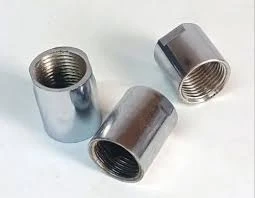-
Cangzhou Yulong Steel Co., Ltd.
-
Phone:
+86 13303177267 -
Email:
admin@ylsteelfittings.com
- English
- Arabic
- Italian
- Spanish
- Portuguese
- German
- kazakh
- Persian
- Greek
- French
- Russian
- Polish
- Thai
- Indonesian
- Vietnamese
- Zulu
- Korean
- Uzbek
- Hindi
- Serbian
- Malay
- Ukrainian
- Gujarati
- Haitian Creole
- hausa
- hawaiian
- Hebrew
- Miao
- Hungarian
- Icelandic
- igbo
- irish
- Japanese
- Javanese
- Kannada
- Khmer
- Rwandese
- Afrikaans
- Albanian
- Amharic
- Armenian
- Azerbaijani
- Basque
- Belarusian
- Bengali
- Bosnian
- Bulgarian
- Catalan
- Cebuano
- China
- China (Taiwan)
- Corsican
- Croatian
- Czech
- Danish
- Esperanto
- Estonian
- Finnish
- Frisian
- Galician
- Georgian
- Kurdish
- Kyrgyz
- Lao
- Latin
- Latvian
- Lithuanian
- Luxembourgish
- Macedonian
- Malgashi
- Malayalam
- Maltese
- Maori
- Marathi
- Mongolian
- Myanmar
- Nepali
- Norwegian
- Norwegian
- Occitan
- Pashto
- Dutch
- Punjabi
- Romanian
- Samoan
- Scottish Gaelic
- Sesotho
- Shona
- Sindhi
- Sinhala
- Slovak
- Slovenian
- Somali
- Sundanese
- Swahili
- Swedish
- Tagalog
- Tajik
- Tamil
- Tatar
- Telugu
- Turkish
- Turkmen
- Urdu
- Uighur
- Welsh
- Bantu
- Yiddish
- Yoruba

Nov . 07, 2024 09:38 Back to list
Exploring the Dynamics of Pipe Cross Structures and Their Applications
The Importance of Pipe Crosses in Industrial Applications
In the world of industrial piping systems, pipe crosses play a crucial role in ensuring the efficient and safe transport of fluids. A pipe cross, which is a fitting that allows for the connection of four pipes at a single junction, may seem like a simple component, but its significance cannot be understated. This article explores the various applications, benefits, and considerations surrounding the use of pipe crosses in different industries.
Understanding Pipe Crosses
Pipe crosses are commonly made from materials such as stainless steel, carbon steel, or PVC, depending on the application's specific needs. These fittings are designed to facilitate the flow of liquids or gases from multiple directions, making them essential in complex piping networks. Typically, a pipe cross connects two pipes horizontally while allowing two additional pipes to enter or exit vertically. This configuration is particularly useful in systems where multiple lines converge, such as in water distribution, chemical processing, and oil and gas industries.
Applications of Pipe Crosses
One of the key applications of pipe crosses is in water supply systems. In municipal water distribution, pipe crosses allow for the integration of various branches, supplying separate neighborhoods or sections of a city with water. Similarly, in fire protection systems, pipe crosses enable the connection of different sprinkler lines to ensure comprehensive coverage during emergencies.
In the chemical processing industry, pipe crosses facilitate the mixing of different substances. By allowing multiple pipes to link together, these fittings support the efficient blending of chemicals and other compounds, which is vital in manufacturing processes. Moreover, the oil and gas sector relies on pipe crosses to manage the intricate networks necessary for extraction, refining, and distribution of petroleum products.
Benefits of Using Pipe Crosses
pipe cross

The use of pipe crosses offers several advantages. First and foremost, they allow for a compact design. By connecting multiple lines in a single fitting, pipe crosses save space and reduce the overall complexity of piping systems. This compactness not only simplifies installation but also minimizes the potential for leaks, which can occur at joint intersections in larger systems.
Moreover, pipe crosses enhance system efficiency. By providing a means for fluid diversion at critical junctions, they help optimize the flow of materials, reducing the need for additional pumps or valves. This efficiency can lead to significant cost savings over time, particularly in large-scale operations where operational costs can be substantial.
Considerations in Selection and Installation
While pipe crosses are beneficial, several factors must be considered when selecting and installing them. The choice of material is crucial, as it must be compatible with the fluids being transported and capable of withstanding relevant pressures and temperatures. Additionally, the correct sizing of the pipe cross is essential to maintain the desired flow rates and prevent blockages.
Installation also requires careful planning. Proper alignment and securing of the pipe cross are vital to ensure a leak-free system. Furthermore, regular maintenance checks are advised to detect any signs of wear or corrosion, as neglecting this can lead to system failures or safety hazards.
Conclusion
In summary, pipe crosses are indispensable components in modern industrial piping systems. Their ability to connect multiple pathways for fluid transport enhances the efficiency and effectiveness of various applications, from water supply networks to complex chemical processing systems. By understanding their importance and ensuring proper selection and maintenance, industries can optimize their operations and enhance safety in fluid handling. As industries continue to evolve, the role of pipe crosses will remain fundamental in supporting infrastructure needs across various sectors.
Latest news
-
ANSI 150P SS304 SO FLANGE
NewsFeb.14,2025
-
ASTM A333GR6 STEEL PIPE
NewsJan.20,2025
-
ANSI B16.5 WELDING NECK FLANGE
NewsJan.15,2026
-
ANSI B16.5 SLIP-ON FLANGE
NewsApr.19,2024
-
SABS 1123 FLANGE
NewsJan.15,2025
-
DIN86044 PLATE FLANGE
NewsApr.19,2024
-
DIN2527 BLIND FLANGE
NewsApr.12,2024
-
JIS B2311 Butt-Welding Fittings LR/SR 45°/90° /180°Seamless/Weld
NewsApr.23,2024











